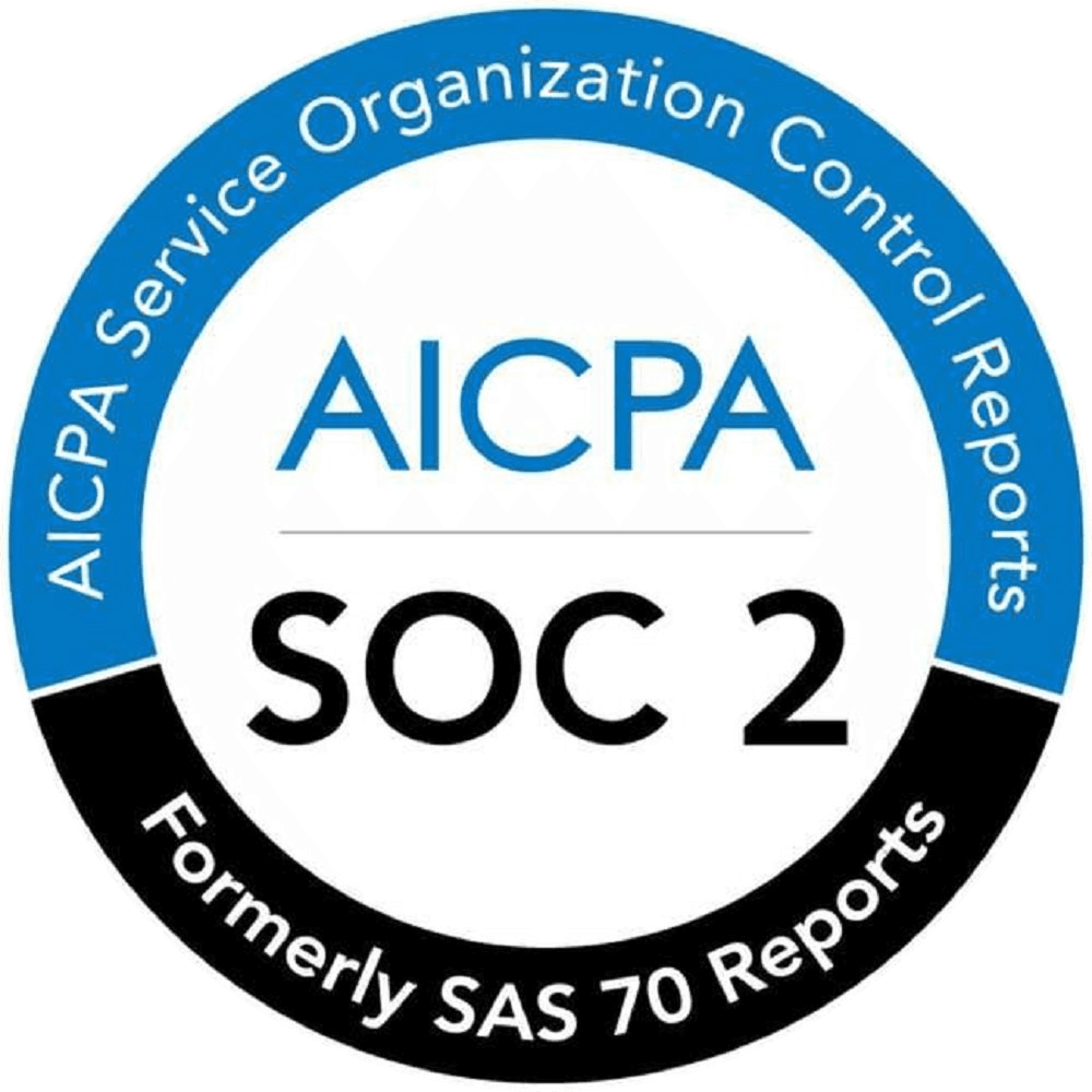Code Quality
Aug 7, 2025
10 Best Code Smell Detection Tools in 2025

Amartya Jha
Founder & CEO, CodeAnt AI
Every developer has opened an old file and immediately thought: "Who wrote this?" only to realize the answer is, well, you. That's the reality of code smells: subtle signs of bad design that creep in over time, no matter how experienced you are.
Code smells aren't bugs, but they make your code harder to work with. They slow down teams, complicate onboarding, and turn small changes into big risks. The good news? You don’t have to spot them all manually. Today’s tools can automatically detect and help fix these problems, some even using AI to prioritize what matters most.
In this guide, we’ll explore ten of the best tools available for identifying code smells in modern codebases. We’ll cover what makes each tool unique, what languages they support, and how they fit into your workflow. Among them is CodeAnt.ai, an AI-powered tool that’s helping developers focus on writing better code instead of just finding flaws.

Criteria for Selecting Code Smell Detection Tools
Choosing the right tool to detect code smells isn’t as simple as picking the most popular option. Different tools serve different purposes, and what works well for a solo developer may not scale for a growing engineering team. To build a fair, practical comparison, we evaluated each tool using a combination of technical depth, usability, and real-world applicability.
Here are the seven core criteria we used to assess and rank each solution:
1. Accuracy and Depth of Detection
Not all code smell detection is created equal. Some tools offer surface-level linting, while others go deeper analyzing code structure, complexity, naming conventions, dead code, and duplication. We looked at how well each tool detects meaningful smells without overwhelming users with noise. Tools that detect anti-patterns, excessive nesting, long methods, or unclear responsibilities scored higher. Bonus points went to those that recognize architectural or design-level smells, which are often harder to detect automatically.
2. Language and Framework Support
Code quality tools are only as useful as the languages they support. We prioritized tools that work across popular programming stacks, including Java, Python, JavaScript, TypeScript, C#, Go, and Ruby, as well as those that support modern frameworks or custom rule sets. Multi-language support is especially important for full-stack teams and monorepos.
3. AI and Smart Prioritization
Some tools merely list problems. Others help you decide which problems matter. As codebases grow, not every issue is equally urgent or impactful. Tools that use artificial intelligence to assess risk, rank issues by severity, or suggest fixes offer a real productivity boost. CodeAnt.ai, for instance, uses machine learning to understand which smells are most likely to cause downstream issues, helping teams focus their efforts where they’ll make the biggest difference.
4. CI/CD and IDE Integration
A good tool should fit naturally into your workflow. We evaluated whether tools integrate easily into CI/CD systems like GitHub Actions, GitLab CI, Jenkins, or Azure Pipelines. We also considered availability of IDE plugins for environments like VS Code, IntelliJ, or Visual Studio. Tools that enable inline feedback during development or automated checks during code reviews were rated higher for developer experience and workflow alignment.
5. Reporting and Visualization
Especially in team environments, visibility into code health matters. We looked for tools that offer rich dashboards, maintainability scores, technical debt tracking, or trend reports over time. Clear, actionable visualizations help developers and engineering leads understand not just what’s wrong but whether things are improving.
6. Developer Experience and Usability
A powerful code analysis tool isn't effective if developers don’t actually use it. That’s why we evaluated how seamless each tool is to adopt from installation and configuration to day-to-day use. Tools with intuitive interfaces, practical defaults, and clear, actionable insights tend to gain wider team adoption. On the flip side, some solutions demand significant setup time or frequent manual tuning. We prioritized those that offer immediate value with minimal friction, helping teams stay productive from the start.
7. Pricing, Licensing, and Scalability
Cost is a key consideration especially for small teams and solo developers. We evaluated whether tools offered transparent pricing, free tiers, or open-source access. For paid products, we considered whether pricing scaled fairly with usage and team size. Tools like CodeAnt.ai that combine powerful features with accessible entry points for smaller teams stood out here. Enterprise readiness (such as SSO, team management, or on-premise options) was also considered where applicable.
10 Best Code Smell Detection Tools
Here’s a closer look at the top tools developers use to identify and manage code smells effectively.
CodeAnt.ai

CodeAnt.ai is a modern, AI-powered tool designed to detect code smells and technical debt across multiple languages and environments. What sets CodeAnt.ai apart is its focus on prioritization, not just detection. It analyzes your codebase in context and ranks issues by severity, impact, and frequency so you’re not stuck digging through noise or cosmetic warnings.
Key Features:
AI-driven detection of code smells and anti-patterns
Smart ranking of issues by risk and technical debt
GitHub, GitLab, Bitbucket integration with pull request comments
Supports custom rules, organizational policies, and automated suggestions
Developer-friendly UI with dashboards for team-wide visibility
CI/CD integrations for automated checks in pipelines
IDE support (VS Code, IntelliJ) for real-time feedback during development
Language Support:
Python, JavaScript, TypeScript, Java, Go (with more in beta)
Integrations:
GitHub, GitLab, Bitbucket, VS Code, IntelliJ, Jenkins, GitHub Actions
Pricing:
Starts at $12/user/month with a free tier for small teams and open-source contributors. Enterprise pricing available on request.
Best For:
Teams looking for smarter detection and prioritization, especially in fast-moving projects or complex repositories. Ideal for those who want to reduce code review time and improve code health over time without being overwhelmed.
SonarQube

SonarQube is one of the most widely used platforms for static code analysis and code quality management. It detects bugs, security vulnerabilities, and code smells across a broad range of programming languages. Known for its mature ecosystem, SonarQube provides dashboards and detailed issue reports that are especially useful in enterprise settings.
Key Features:
Comprehensive detection of code smells, bugs, and security issues
Code quality gate checks for CI pipelines
Maintainability and technical debt scoring
Extensive plugin system
Support for team-wide reporting and history tracking
Language Support:
Over 25 languages including Java, Python, JavaScript, C#, Kotlin, PHP, and more
Integrations:
GitHub, GitLab, Bitbucket, Azure DevOps, Jenkins, SonarCloud (SaaS version), IntelliJ
Pricing:
Free (Community Edition) for basic features and local usage
Developer Edition starts at $150/year
Enterprise plans scale by lines of code (up to several thousand dollars/year)
Best For:
Organizations seeking a proven, full-featured platform for long-term quality management. Works well for large enterprises or teams with structured DevOps pipelines.
PMD

PMD is a fast, lightweight static code analysis tool focused primarily on Java. It scans source code for potential issues like unused variables, overly complex code, and naming problems. While it doesn’t use AI or advanced visualization, it’s open-source and very effective for rule-based analysis in Java-heavy projects.
Key Features:
Rule-based detection for code smells and style violations
Easily customizable rule sets
Lightweight and fast ideal for local pre-commit checks
Works with Maven, Ant, Gradle, and other Java tools
Includes CPD (Copy-Paste Detector) for detecting duplication
Language Support:
Java, JavaScript, XML, Apex, PLSQL, and a few others
Integrations:
Eclipse, IntelliJ, Maven, Ant, Jenkins
Pricing:
Completely free and open-source
Best For:
Java developers looking for a lightweight, customizable tool to catch structural issues early in the dev process.
Checkstyle

Checkstyle is a static analysis tool designed to uphold coding standards and formatting guidelines in Java codebases. It’s commonly integrated into CI pipelines to ensure uniformity across large projects and complements tools like PMD for a more comprehensive code quality workflow.
Key Features:
Enforces Java coding standards
Supports custom rule configurations
Integrates with Maven, Gradle, and Ant
Lightweight and simple to run on each build
Language Support:
Java
Integrations:
Maven, Gradle, Eclipse, IntelliJ, Jenkins, and CI pipelines
Pricing:
Free and open-source
Best For:
Teams working with Java who want to enforce style consistency and basic smell detection without additional overhead.
ESLint

ESLint is a widely adopted linting tool for JavaScript and TypeScript that helps developers identify code smells, enforce consistent coding styles, and automatically fix common issues. Known for its flexibility and strong plugin ecosystem, it's a go-to choice in both front-end and Node.js environments.
Key Features:
Detects code smells, complexity, and best practice violations
Highly customizable with plugin ecosystem
Auto-fix for many common issues
Integrated with most front-end frameworks
Language Support:
JavaScript, TypeScript
Integrations:
VS Code, WebStorm, GitHub Actions, CI/CD tools, most modern JavaScript build tools
Pricing:
Free and open-source
Best For:
JavaScript and TypeScript developers who want a fast, flexible tool for enforcing code quality and preventing common errors.
NDepend

NDepend is an advanced static analysis solution tailored for .NET developers. It offers detailed insights into code architecture, complexity, and technical debt through customizable metrics and visual reports. Frequently used in enterprise settings, it’s ideal for teams that need precise control over code quality and architectural standards.
Key Features:
Advanced code metrics and dependency analysis
Technical debt estimation and tracking
Rich visualizations and interactive dashboards
Customizable rules using CQLinq (Code Query Language)
Language Support:
C#, .NET
Integrations:
Visual Studio, Azure DevOps, TeamCity, Jenkins
Pricing:
Starts at $477 per developer/year
30-day free trial available
Best For:
.NET development teams and enterprise environments looking for comprehensive architectural analysis and visual code metrics.
RuboCop

RuboCop has become the standard choice for static analysis in Ruby projects, offering a reliable way to enforce coding conventions and identify code smells.
It enforces community-driven style guides, detects code smells, and provides automatic fixes for many issues. For Ruby developers, it functions as both a linting tool and a lightweight refactoring assistant.
RuboCop works particularly well in Rails environments and integrates smoothly with popular CI tools. Its strength lies in keeping code readable, idiomatic, and consistent making it a daily tool in many Ruby teams’ workflows.
Key Features:
Enforces the Ruby Style Guide
Detects code smells like method length, complexity, and duplication
Auto-corrects many issues (e.g., indentation, syntax fixes)
Extensible via plugins (e.g., RuboCop Rails, RuboCop RSpec)
Helps prevent common bugs and maintain a uniform codebase
Language Support:
Ruby
Integrations:
VS Code, GitHub Actions, CircleCI, Travis CI, GitLab CI, Rake, Guard
Pricing:
Completely free and open-source
Best For:
Ruby developers who want a reliable, configurable tool to enforce code quality, catch common smells, and auto-fix trivial issues.
Pylint

Pylint is a powerful static analysis tool for Python that checks for coding standards, detects code smells, and provides error messages for potential bugs and design issues. It is known for its high level of configurability and for being more strict than other Python linters like Flake8 or Pyflakes.
Pylint can be run from the command line or integrated directly into IDEs and CI pipelines. It generates a detailed report with code ratings and recommendations that help teams maintain cleaner and more Pythonic codebases.
Key Features:
Detects unused variables, overly complex functions, and naming issues
Scans for both style violations and potential logical errors
Assigns a score to files and modules for easy quality tracking
Supports custom rules and configuration for specific project needs
Works well in pre-commit hooks and CI workflows
Language Support:
Python
Integrations:
VS Code, PyCharm, GitHub Actions, GitLab CI, Jenkins, pre-commit, tox
Pricing:
Free and open-source
Best For:
Python developers who need strict static code analysis and a scoring-based approach to evaluate code health across projects.
DeepSource

DeepSource is a modern code analysis platform that supports multiple languages and integrates tightly with CI/CD systems. It offers real-time feedback, code smell detection, bug discovery, and formatting all while promoting code maintainability and team-wide quality standards.
What makes DeepSource appealing to modern development teams is its automation-first approach. It provides inline suggestions in pull requests, tracks code quality trends, and supports custom rules for teams with specific style guides or compliance needs.
Key Features:
Automated analysis and inline code suggestions in pull requests
Multi-language support (Python, Go, JavaScript, Java, Ruby, etc.)
Tracks technical debt and code quality trends over time
Built-in autofix and formatting support
Custom policies and rulesets for team-specific guidelines
Code coverage and security scanning options (on paid tiers)
Language Support:
Python, JavaScript, Java, Go, Ruby, TypeScript, Kotlin
Integrations:
GitHub, GitLab, Bitbucket, GitHub Actions, CircleCI, Travis, VS Code
Pricing:
Free for individuals and open-source projects
Paid plans start at $8/user/month, with advanced features and team dashboards
Custom pricing available for enterprises
Best For:
Engineering teams looking for a clean, automated solution to monitor code health, enforce standards, and reduce review time.
10. Infer

Infer is an open-source tool from Meta that focuses on detecting critical issues like null dereferences and memory leaks before code reaches production. Unlike style-oriented linters, it performs interprocedural analysis to catch bugs across functions and files, making it especially useful in large or performance-sensitive systems.
Key Features:
Detects null dereferencing, memory leaks, thread-safety violations, and resource leaks
Interprocedural analysis for deeper bug discovery
Optimized for CI workflows with fast incremental checks
Active development and support for large-scale systems
Can analyze pull requests and surface issues before merge
Language Support:
Java, C, C++, Objective-C, and more (limited or no support for Python, JS, etc.)
Integrations:
CI/CD pipelines, custom Git hooks, works well with Jenkins, GitHub Actions, and command-line workflows
Pricing:
Completely free and open-source, maintained by Meta
Best For:
Teams working with native or compiled languages (like Java, C, or Objective-C) that need to catch critical runtime bugs early especially in mobile apps, system-level code, or performance-sensitive services.
Comparing the Top 10 Code Smell Detection Tools
With so many tools available, choosing the right one often comes down to your specific needs language stack, team size, workflow preferences, and budget. The table below provides a side-by-side comparison of the ten tools we explored, making it easier to evaluate their strengths, limitations, and pricing.
Tool | Language Support | Key Features | Pricing | Best Fit For |
CodeAnt.ai | Python, JS, TS, Java, Go | AI-driven prioritization, dashboards, CI/CD | From $12/user/mo | Teams needing smart, scalable analysis |
SonarQube | 25+ languages | Quality gates, static analysis, dashboards | Free & Paid | Enterprises needing broad governance |
PMD | Java, Apex, XML | Rule-based analysis, duplication detection | Free | Java teams needing lightweight checks |
Checkstyle | Java | Style enforcement, custom rules | Free | Java devs focusing on code consistency |
ESLint | Javascript, TypeScript | Linting, auto-fix, plugin ecosystem | Free | Front-end & Node.js developers |
NDepend | C#, .NET | Code metrics, architecture analysis | $477/dev/year | .NET teams needing deep code insight |
RuboCop | Ruby | Style guide enforcement, auto-correction | Free | Ruby developers and Rails projects |
Pylint | Python | Strict code checking, score-based reports | Free | Python devs seeking detailed analysis |
DeepSource | Python, JS, Java, Ruby | PR feedback, auto-fix, tech debt tracking | From $8/user/mo | Teams automating review workflows |
Infer | Java, C, C++, Obj-C | Runtime bug detection, memory checks | Free | Native/mobile developers catching leaks |
Which One Should You Choose?
Working in Ruby? Go with RuboCop. It's widely adopted and easy to configure for Ruby projects.
Need to enforce style in Java? Checkstyle and PMD are reliable and lightweight options, ideal for maintaining clean Java codebases.
Focused on front-end or Node.js? ESLint is the industry standard for JavaScript and TypeScript, with a rich plugin ecosystem.
Python developer? Both Pylint and DeepSource offer strong Python support Pylint for strict rule enforcement, DeepSource for PR-level insights.
.NET team? NDepend provides deep architectural analysis and metrics tailored for large-scale C# projects.
Dealing with native or mobile code? Infer is your best bet for catching memory leaks and runtime bugs early.
Want something smarter and more scalable? CodeAnt.ai stands out with AI-driven prioritization, clean team dashboards, and multi-language support ideal for modern teams managing complex systems and technical debt across multiple services.
Conclusion:
No codebase is perfect and that’s okay. What separates healthy teams from struggling ones isn’t spotless code, but a willingness to improve it continuously.
Whether you’re linting your first project or managing dozens of microservices, the tools you choose can help shape better habits, reduce friction, and build software your team is proud of. With newer solutions like CodeAnt.ai making it easier to act on what matters, code quality is becoming more manageable than ever.
So explore, experiment, and evolve. Cleaner code is a journey and you’ve got the right tools to take the next step.













